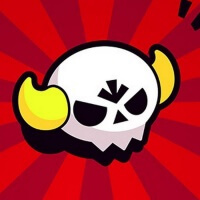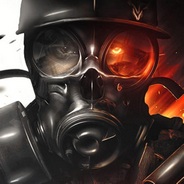. Ship's strength is her ability to take up the action of external loads without failure and great changes of the hull shape. In order to endure static and dynamic loads the ship is to possess sufficient strength and rigidity. In ordinary every day language a ship is said to be loaded when the cargo, etc., is put on board, but the structural parts constitute a considerable load too, in the mechanical sense of the word, in the light condition as well. That means that a ship in the light condition may be subjected to considerable straining forces. In fact, in every condition of a ship, some or all of the component parts of the structure are subjected to stress. The word "load", then, in this connection should be clearly distinguished.
The structure of the completed ship, under all possible conditions of loading, must be able to withstand the most violent sea states to be experienced, without structural failure which would endanger the vessel. First of all a vessel is loaded by the weights of hull, propelling installations, equipment, fuel, cargo, etc. Furthermore, she is acted upon by the upward forces of the water. These vertical forces are called shearing forces, or simply shear forces, because they tend to cut or to shear the ship into vertical slices. In a structural member the applied force per unit area is called stress. The corresponding deformation per unit length is called strain. We speak of the stresses when the part loaded is subjected to a pull, thrust, twist or shearing action, etc., all these tend to produce a condition quite different from that before the load was applied. This action is the stress on the material. The effect of stress is to cause the parts under stress to yield or to alter in form. The amount of actual yielding is the strain. The strain depends upon the nature of the material, the intensity of the stress and the manner in which the load may be applied. In the steel's elastic range, strain is proportional to stress; by doubling the stress, the strain is also doubled. When stress tends to extend or stretch the metal, it is called tension stress, and it produces a tension strain. When stress tends to contract or shrink the metal, it is called a compression stress, and it results in a compression strain. The section modulus for any longitudinal fiber of the ship's girder cross section is equal to the moment of inertia of the total cross section, divided by the distance of the fiber from the neutral axis. The smaller the section modulus, the higher the stress and vice versa. Section modulus is a measure of the structural bending strength of the section involved.
The transverse strength loads act on transverse members causing structural distortion of the outer shell, bottom structure, ballast tanks, etc. There are two impact loads classified as transverse strength loads: slamming and sloshing. Slamming may be categorized as a transverse strength load as well as a longitudinal one. It means the impact force as the shell plating hits the water surface severely. Therefore, it generates not only a longitudinal load but also a load affecting the transverse strength simultaneously. Many ships are damaged by slamming resulting in denting of shell plating, in particular the bottom forward shell plating. If a ship's bow is pushed into the deep water the wave crest may come down on the forecastle deck. This is called "deck wetness by green water" and may cause damage of the ship's structure and deck machinery. Sloshing creates an impact force between the free surface of the fluid and the tank structure.
The local strength loads affect the local strength members, such as shell panels, stiffeners, connecting elements between stiffeners and so on.
The load is transmitted gradually and continuously from a local structural member to the adjacent bigger supporting member, the best way to categorize loads on the hull structure is as follows:
1) longitudinal strength loads;
2) transverse strength loads;
3) local strength loads.
это текст и к нему задание.
Ex. 2. Match the words in (a) with their synonyms in (b). Find in the text sentences in which these words are used and translate them into Russian:
a) strength, strain, withstand, failure, shear, apply, tension, contract, bend, slosh, dent, load, slamming, transmit, amount, cause;
b) value, transfer, buckle, stretch, breakdown, distortion, durability, endure, use, hollow, induce, cut, shrink, whipping, splash, force.
216
284
Ответы на вопрос:
Реши свою проблему, спроси otvet5GPT
-
Быстро
Мгновенный ответ на твой вопрос -
Точно
Бот обладает знаниями во всех сферах -
Бесплатно
Задай вопрос и получи ответ бесплатно

Популярно: Английский язык
-
Speak about: a) popular british sports and games b)sports and games...
 lboik21.11.2022 13:41
lboik21.11.2022 13:41 -
Opening remarks, reason for writing, name of dish(how are you? so, you...
 777ppp77703.05.2020 16:46
777ppp77703.05.2020 16:46 -
Прошу люди с 40 ! нужно 3 (на втором фото продолжение его), и 5 (на...
 looolll2k1706.05.2020 14:09
looolll2k1706.05.2020 14:09 -
Написать 15 предложений на одну из тем: 1) you are, what you eat(ты...
 nastyasuhomlinova11.01.2022 18:22
nastyasuhomlinova11.01.2022 18:22 -
Написать сочинение 15 предложении на тему : nature is our home and we...
 marilmermaidp08sv121.02.2022 19:17
marilmermaidp08sv121.02.2022 19:17 -
1. My sister and brother playing tennis at 11 am yesterday. * was are...
 ladybutiyarowa14.08.2020 04:11
ladybutiyarowa14.08.2020 04:11 -
Wearing his Frankenstein costume. you Pete: Well, a party for a gang...
 Artemmmmhdjm04.10.2022 15:49
Artemmmmhdjm04.10.2022 15:49 -
Напишите примерно такой же текст, но только в рифму, например: я хочу...
 karinaigubaeva13.04.2020 13:56
karinaigubaeva13.04.2020 13:56 -
Подготовить сообщение про одно животное. Не менее 6 предложений....
 sofiapel68p08lqa28.02.2022 20:32
sofiapel68p08lqa28.02.2022 20:32 -
Translate into English. 1. Англия ввозит много фруктов. Их доставляют...
 Dan4ik111111111113.08.2021 15:42
Dan4ik111111111113.08.2021 15:42

Есть вопросы?
-
Как otvet5GPT работает?
otvet5GPT использует большую языковую модель вместе с базой данных GPT для обеспечения высококачественных образовательных результатов. otvet5GPT действует как доступный академический ресурс вне класса. -
Сколько это стоит?
Проект находиться на стадии тестирования и все услуги бесплатны. -
Могу ли я использовать otvet5GPT в школе?
Конечно! Нейросеть может помочь вам делать конспекты лекций, придумывать идеи в классе и многое другое! -
В чем отличия от ChatGPT?
otvet5GPT черпает академические источники из собственной базы данных и предназначен специально для студентов. otvet5GPT также адаптируется к вашему стилю письма, предоставляя ряд образовательных инструментов, предназначенных для улучшения обучения.
